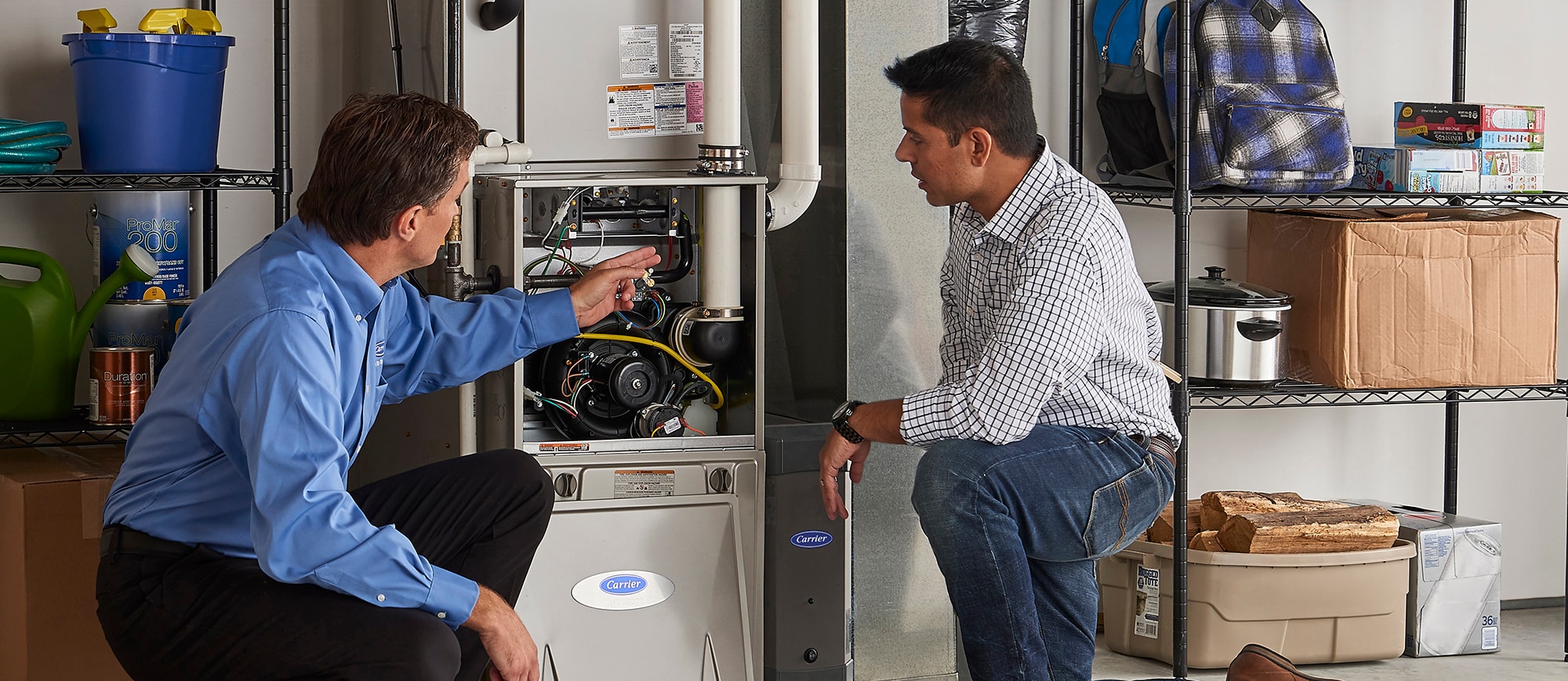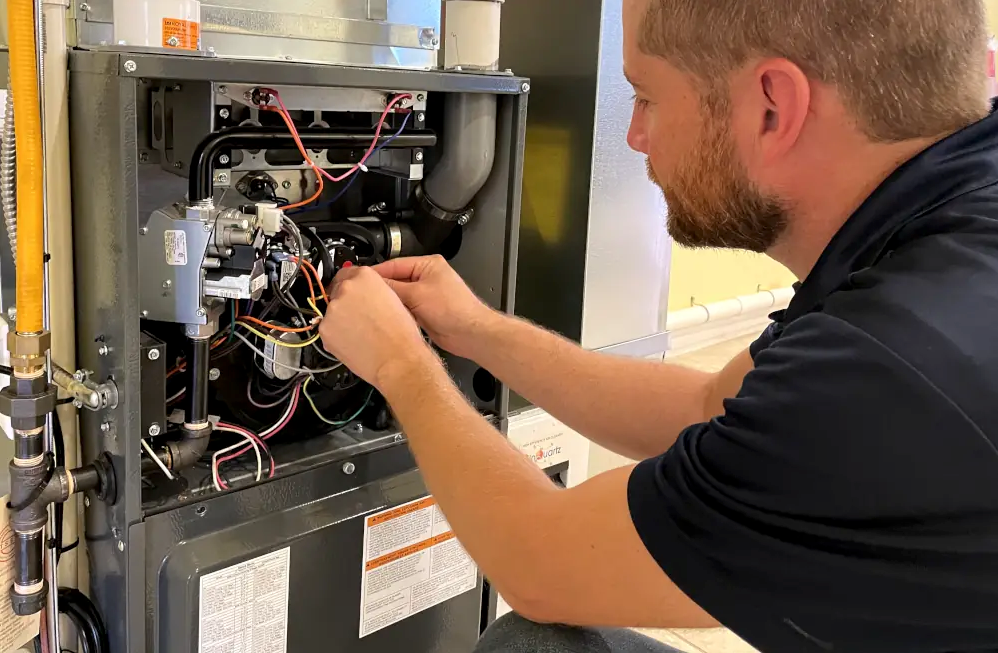When temperatures drop in and around Edmonton, your furnace becomes the unsung hero of your home. But if your system isn’t turning on, blowing cold air, or running inefficiently, you don’t have to panic, at least not right away.
Some furnace issues can be solved with a few basic troubleshooting steps, no tools required. In this guide, we’ll walk you through the most common furnace troubleshooting tips for homeowners, so you can restore heat or know when it’s time to call your trusted Edmonton plumbers.
Introduction to Furnace Troubleshooting
When your heating system suddenly stops working, knowing how to troubleshoot your furnace can save you time, money, and discomfort, especially during the peak of the heating season. Furnace troubleshooting is a valuable skill for any homeowner, whether you have a gas furnace or an electric model. By understanding the basics of furnace troubleshooting, you can quickly identify common issues and apply simple troubleshooting tips to get your furnace back up and running. This furnace troubleshooting guide will walk you through essential steps, from safety checks to routine maintenance, so you can address a malfunctioning furnace with confidence. With the right approach, you’ll be able to keep your home warm and comfortable all season long.
Safety Precautions
Before you begin any furnace troubleshooting, it’s important to prioritize your safety and the safety of your home. Always start by turning off the power to your furnace at the circuit breaker or fuse box to prevent electrical accidents. Familiarize yourself with key components such as the gas valve, furnace switch, and pilot light, so you know what you’re working with. If you ever smell gas or suspect a gas leak, leave your home immediately and contact your gas company, never attempt to fix a gas leak yourself. Remember, working on a heating system without the proper knowledge or tools can be dangerous. If you’re unsure about any step or encounter a situation that feels unsafe, don’t hesitate to call a professional for help.

Pre-Troubleshooting Checks
Before diving into more detailed furnace troubleshooting, it’s wise to perform a few quick checks that could resolve the issue right away. Start by checking the thermostat setting to ensure it’s set to “heat” and that the temperature is set higher than the current room temperature. Make sure the furnace power switch is in the ON position and that the circuit breaker hasn’t tripped. Inspect the air filter, if you find a dirty filter or clogged filter, replace it immediately, as restricted airflow can cause your furnace to stop working properly. Also, take a moment to check the outdoor vents for any blockages that could be affecting proper airflow. By running through these pre-troubleshooting checks, you might solve the problem without needing to call a professional.
1. Check the Thermostat Settings
It sounds obvious, but many furnace problems start with a malfunctioning thermostat or simply the wrong thermostat setting.
- Make sure the thermostat is set to “HEAT”
- Ensure the temperature setting is above the current room temperature
- If using a smart thermostat, double-check your programmed schedule or Wi-Fi connection
- Replace batteries if the screen is blank
Still not working? Move on to the furnace itself.
2. Inspect the Furnace Power Switch and Breaker
Checking the power supply is a fundamental troubleshooting step for furnace issues. Every furnace has a furnace switch that controls power to the unit, and sometimes it gets turned off accidentally during cleaning or home projects.
- Find the furnace power switch, usually on the side or near the unit
- Make sure it’s in the ON position
- Next, check your breaker box or electrical panel for a tripped circuit breaker or blown fuse, as a tripped circuit breaker is a common issue that can prevent your furnace from working
If the breaker continues to trip, that’s a sign of a deeper electrical issue. Call a professional to diagnose it safely.
3. Replace or Clean the Furnace Filter
A dirty filter, especially a dirty air filter, is one of the most common reasons furnaces underperform or stop working entirely. Clogged air filters can restrict airflow, reduce indoor air quality, and even trigger a safety shut-off.
- Remove your furnace filter (usually found inside or near the front panel door) and inspect all air filters and furnace filters in your system
- If you notice a dirty air filter that looks dusty, grey, or clogged, replace it with a new filter
- During heating season, replace air filters and furnace filters every 1–3 months for optimal performance
This simple fix can prevent overheating, improve air quality, and even lower your energy bills. Regular maintenance of furnace filters and air filters can help prevent these common issues.
4. Check the Pilot Light or Furnace Flame
If you have an older gas furnace, it may have a pilot light that can go out due to wind, draft, or buildup.
- Check for a blue flame inside the combustion chamber
- If the pilot is out, relight it according to your owner’s manual and always follow the manufacturer’s instructions for safety
- If your model has an electronic igniter, listen for clicking or rapid flashing
If the furnace flame is yellow or flickering, that’s a bad sign. It could indicate incomplete combustion or even a gas leak. Shut off the system and call a professional HVAC technician immediately.
5. Check Outdoor Vents and Air Registers
Blocked or clogged outdoor vents can reduce airflow and shut down your furnace as a safety precaution.
- Clear away snow, leaves, or debris from exterior furnace vents and check for blocked vents to ensure all vents are unobstructed
- Make sure indoor vents and air registers are open and unobstructed by furniture
- If you feel low heat flow, the issue might be with ductwork or the blower motor
Maintaining proper airflow keeps your system running safely and efficiently.
6. Listen for Unusual Noises or Smells
Your furnace shouldn’t sound like a marching band, and it shouldn’t smell like rotten eggs either.
Common warning signs include:
- Banging or rattling (loose components or faulty blower motor)
- Whining or squealing (worn belts or bearings)
- Gas smell – this may indicate a gas leak, exit the home and contact your gas company and Apollo Plumbing immediately
A faulty limit switch or safety switch can also cause your furnace to shut down unexpectedly or behave erratically, and may require professional attention.
Don’t ignore these red flags. They may lead to bigger issues or pose serious safety risks.

Furnace Maintenance
Keeping up with regular furnace maintenance is the best way to prevent furnace problems and ensure your heating system runs smoothly all winter. Make it a habit to check and replace your air filter every 90 days, as a dirty filter can restrict airflow, increase your energy bills, and even cause your furnace to fail prematurely. Inspect important components like the blower motor, furnace flame, and gas valve to confirm they’re functioning properly. Cleaning the combustion chamber and burners helps prevent dirty burners from reducing your furnace’s efficiency. Don’t forget to check for duct leaks, as these can lead to excessive air pressure and decrease overall performance. Following these furnace maintenance tips will help you achieve optimal performance and extend the life of your furnace. Always consult your owner’s manual for specific instructions, and if you’re ever unsure, call a professional to keep your system in top shape.
7. When to Call a Professional
While these furnace troubleshooting tips can solve many common problems, homeowners should contact a professional if troubleshooting steps do not resolve the problem or if they have safety concerns. Sometimes it’s best to leave it to the pros.
Call Apollo Plumbing if:
- Your furnace still won’t turn on after basic checks
- The blower motor runs constantly
- You hear strange noises or smell gas
- There are frequent thermostat issues
- You’ve had repeated heating system problems year after year
Our team can inspect your system, make fast repairs, and ensure your heating system is safe and winter-ready.
TL;DR – Furnace Troubleshooting Tips for Homeowners
- Check the thermostat settings and replace batteries
- Flip the furnace power switch and check the circuit breaker
- Replace your furnace filter to restore airflow
- Inspect the pilot light or furnace flame for issues
- Clear any blockages from vents and registers
- Follow basic furnace troubleshooting steps to diagnose common problems before calling for help
- Call a pro if you smell gas or hear unusual noises
Final Thoughts
When your furnace stops producing heat, don’t panic, start with the basics. These furnace troubleshooting tips for homeowners can help you restore heat, improve indoor air quality, and avoid unnecessary service calls.
If you notice issues with your cooling system, furnace blower motor, or flame sensor, these may require professional assessment. When the furnace turns on and off frequently, or if there are problems with the gas supply, it’s a sign to seek expert help. Higher energy bills or insufficient warm air can indicate deeper issues with the furnace’s components. These tips apply to both gas furnaces and other types, so regular inspection of the furnace’s parts is important.
Need expert help with a malfunctioning furnace, filter replacement, or seasonal tune-up? Contact Apollo Plumbing today to schedule a visit. We’re Edmonton’s trusted team for heating, plumbing, and emergency plumbing support, with no overtime fees and service you can count on.
Want to learn more about your furnace’s performance? Explore our furnace services and maintenance plans.

